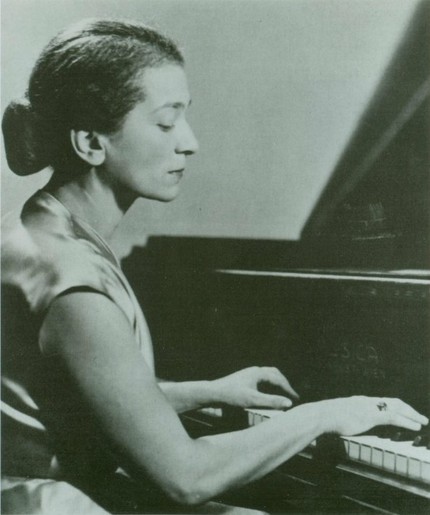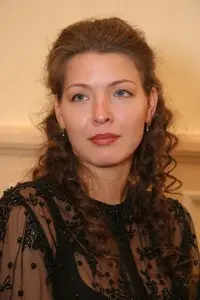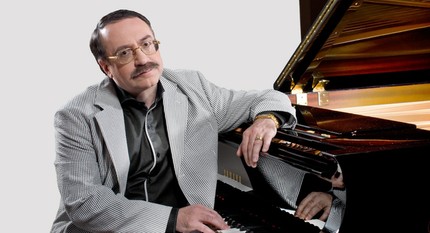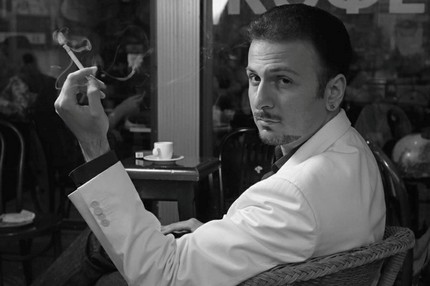
Annie Fischer |
Annie Fischer

This name is known and appreciated in our country, as well as in many countries of different continents – wherever the Hungarian artist has visited, where numerous records with her recordings are played. Pronouncing this name, music lovers remember that special charm inherent in it alone, that depth and passion of experience, that high intensity of thought that she puts into her playing. They recall the noble poetry and immediacy of feeling, the amazing ability to simply, without any external affectation, achieve a rare expressiveness of performance. Finally, they recall the extraordinary determination, dynamic energy, masculine strength – precisely masculine, because the notorious term “women’s game” as applied to it is absolutely inappropriate. Yes, meetings with Annie Fischer really remain in my memory for a long time. Because in her face we are not just an artist, but one of the brightest personalities of contemporary performing arts.
Annie Fischer’s pianistic skills are impeccable. His sign is not only and not so much technical perfection, but the artist’s ability to easily embody her ideas in sounds. Accurate, always adjusted tempos, a keen sense of rhythm, an understanding of the internal dynamics and logic of the development of music, the ability to “sculpt the form” of a piece being performed – these are the advantages inherent in it to the fullest. Let’s add here a full-blooded, “open” sound, which, as it were, emphasizes the simplicity and naturalness of her performing style, the richness of dynamic gradations, timbre brilliance, softness of touch and pedalization …
Having said all this, we have not yet come to the main distinguishing feature of the pianist’s art, her aesthetics. With all the variety of its interpretations, they are united by a powerful life-affirming, optimistic tone. This does not mean that Annie Fischer is alien to drama, sharp conflicts, deep feelings. On the contrary, it is in music, full of romantic enthusiasm and great passions, that her talent is fully revealed. But at the same time, an active, strong-willed, organizing principle is invariably present in the artist’s game, a kind of “positive charge” that brings with it her individuality.
Annie Fischer’s repertoire is not very wide, judging by the names of the composers. She limits herself almost exclusively to classical and romantic masterpieces. The exceptions are, perhaps, only a few compositions by Debussy and the music of her compatriot Bela Bartok (Fischer was one of the first performers of his Third Concerto). But on the other hand, in her chosen sphere, she plays everything or almost everything. She especially succeeds in large-scale compositions – concertos, sonatas, variation cycles. Extreme expressiveness, intensity of experience, achieved without the slightest touch of sentimentality or mannerisms, marked her interpretation of the classics – Haydn and Mozart. There is not a single edge of a museum, stylization “under the era” here: everything is full of life, and at the same time, carefully thought out, balanced, restrained. The deeply philosophical Schubert and the sublime Brahms, the gentle Mendelssohn and the heroic Chopin form an important part of her programs. But the highest achievements of the artist are associated with the interpretation of the works of Liszt and Schumann. Everyone who is familiar with her interpretation of the piano concerto, Carnival and Schumann’s Symphonic Etudes or Liszt’s Sonata in B minor, could not help but admire the scope and quivering of her playing. In the last decade, one more name has been added to these names – Beethoven. In the 70s, his music occupies a particularly significant place in Fischer’s concerts, and her interpretation of the large paintings of the Viennese giant becomes deeper and more powerful. “Her performance of Beethoven in terms of the clarity of concepts and the persuasiveness of the transfer of musical drama is such that it immediately captures and captivates the listener,” wrote the Austrian musicologist X. Wirth. And the Music and Music magazine noted after the artist’s concert in London: “Her interpretations are motivated by the highest musical ideas, and that special kind of emotional life that she demonstrates, for example, in the adagio from the Pathetique or Moonlight Sonata, seems to have gone to several light-years ahead of today’s “stringers” of notes.
However, Fischer’s artistic career began with Beethoven. She started in Budapest when she was only eight years old. It was in 1922 that the girl first appeared on the stage, performing Beethoven’s First Concerto. She was noticed, she got the opportunity to study under the guidance of famous teachers. At the Academy of Music, her mentors were Arnold Szekely and the outstanding composer and pianist Jerno Donany. Since 1926, Fischer has been a regular concert activity, in the same year she made her first trip outside of Hungary – to Zurich, which marked the beginning of international recognition. And his victory at the first International Piano Competition in Budapest, F. Liszt (1933), consolidated his victory. At the same time, Annie first heard the musicians who made an indelible impression on her and influenced her artistic development – S. Rachmaninoff and E. Fischer.
During the Second World War, Annie Fischer managed to escape to Sweden, and soon after the expulsion of the Nazis, she returned to her homeland. At the same time, she began teaching at the Liszt Higher School of Music and in 1965 received the title of professor. Her concert activity in the post-war period received an extremely wide scope and brought her the love of the audience and numerous recognitions. Three times – in 1949, 1955 and 1965 – she was awarded the Kossuth Prize. And outside the borders of her homeland, she is rightfully called the ambassador of Hungarian art.
… In the spring of 1948, Annie Fischer first came to our country as part of a group of artists from fraternal Hungary. At first, the performances of the members of this group took place in the studios of the House of Radio Broadcasting and Sound Recording. It was there that Annie Fischer performed one of the “crown numbers” of her repertoire – Schumann’s Concerto. Everyone who was present in the hall or heard the performance on the radio was captivated by the skill and spiritual elation of the game. After that, she was invited to take part in a concert on the stage of the Hall of Columns. The audience gave her a long, heated ovation, she played again and again – Beethoven, Schubert, Chopin, Liszt, Mendelssohn, Bartok. Thus began the acquaintance of the Soviet audience with the art of Annie Fischer, an acquaintance that marked the beginning of a long and lasting friendship. In 1949, she already gave a solo concert in Moscow, and then she performed countless times, performing dozens of various works in different cities of our country.
Annie Fischer’s work has since attracted the close attention of Soviet critics, it has been carefully analyzed on the pages of our press by leading experts. Each of them found in her game the closest to him, the most attractive features. Some singled out the richness of the sound palette, others – the passion and strength, others – the warmth and cordiality of her art. True, admiration here was not unconditional. D. Rabinovich, for example, highly appreciating her performance of Haydn, Mozart, Beethoven, unexpectedly tried to cast doubt on her reputation as a Schumanist, expressing the opinion that her playing “has no true romantic depth”, that “her excitement is purely external”, and the scale in places turns into an end in itself. On this basis, the critic concluded about the dual nature of Fischer’s art: along with classicism, lyricism and dreaminess are also inherent in it. Therefore, the venerable musicologist characterized the artist as a representative of the “anti-romantic trend.” It seems, however, that this is rather a terminological, abstract dispute, because Fischer’s art is in fact so full-blooded that it simply does not fit into the Procrustean bed of a certain direction. And one can only agree with the opinion of another connoisseur of piano performance K. Adzhemov, who painted the following portrait of the Hungarian pianist: “The art of Annie Fischer, romantic in nature, is deeply original and at the same time connected with traditions dating back to F. Liszt. Speculativeness is alien to its execution, although its basis is a deeply and comprehensively studied author’s text. Fischer’s pianism is versatile and superbly developed. Equally impressive is the articulated fine and chord technique. The pianist, even before touching the keyboard, feels the sound image, and then, as if sculpting the sound, achieving expressive timbre diversity. Directly, it sensitively responds to every significant intonation, modulation, change in rhythmic breathing, and the particular interpretations of it are inextricably linked with the whole. In the performance of A. Fischer, both the charming cantilena and the oratorical elation and pathos attract. The artist’s talent manifests itself with particular force in compositions saturated with the pathos of great feelings. In her interpretation, the innermost essence of music is revealed. Therefore, the same compositions in her each time sound in a new way. And this is one of the reasons for the impatience with which we expect new meetings with her art.
These words, spoken in the early 70s, remain true to this day.
Annie Fischer categorically refused to release the recordings made during her concerts, citing their imperfection. On the other hand, she also did not want to record in the studio, explaining that any interpretation created in the absence of a live audience would inevitably be artificial. However, starting in 1977, she spent 15 years working in the studios, working on recording all of Beethoven’s sonatas, a cycle that was never released to her during her lifetime. However, after the death of Annie Fischer, many parts of this work became available to listeners and were highly appreciated by connoisseurs of classical music.
Grigoriev L., Platek Ya., 1990





